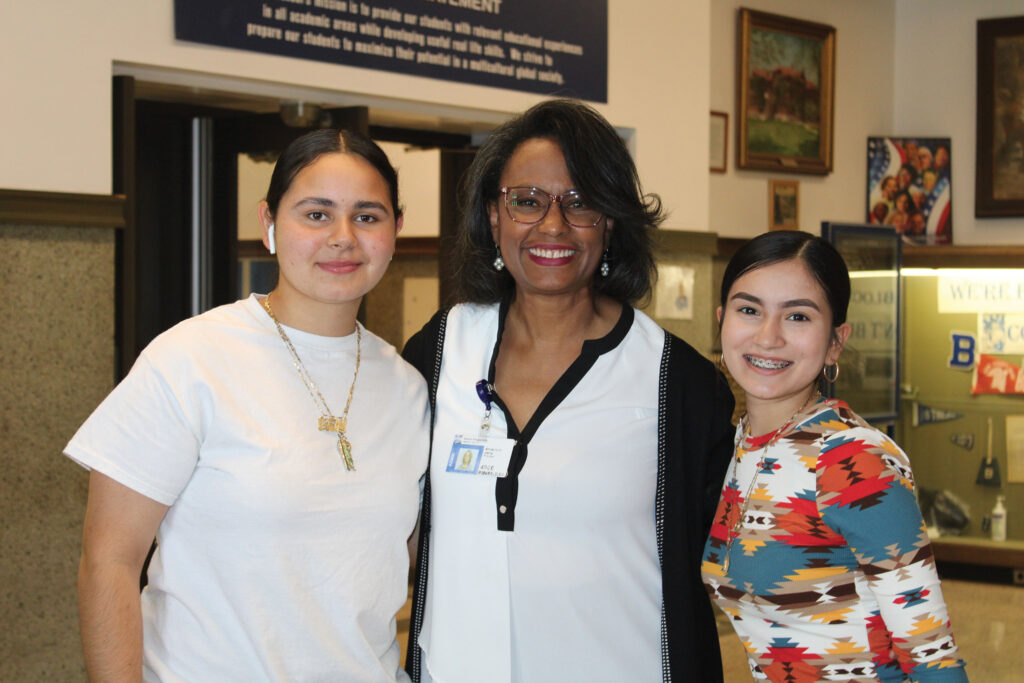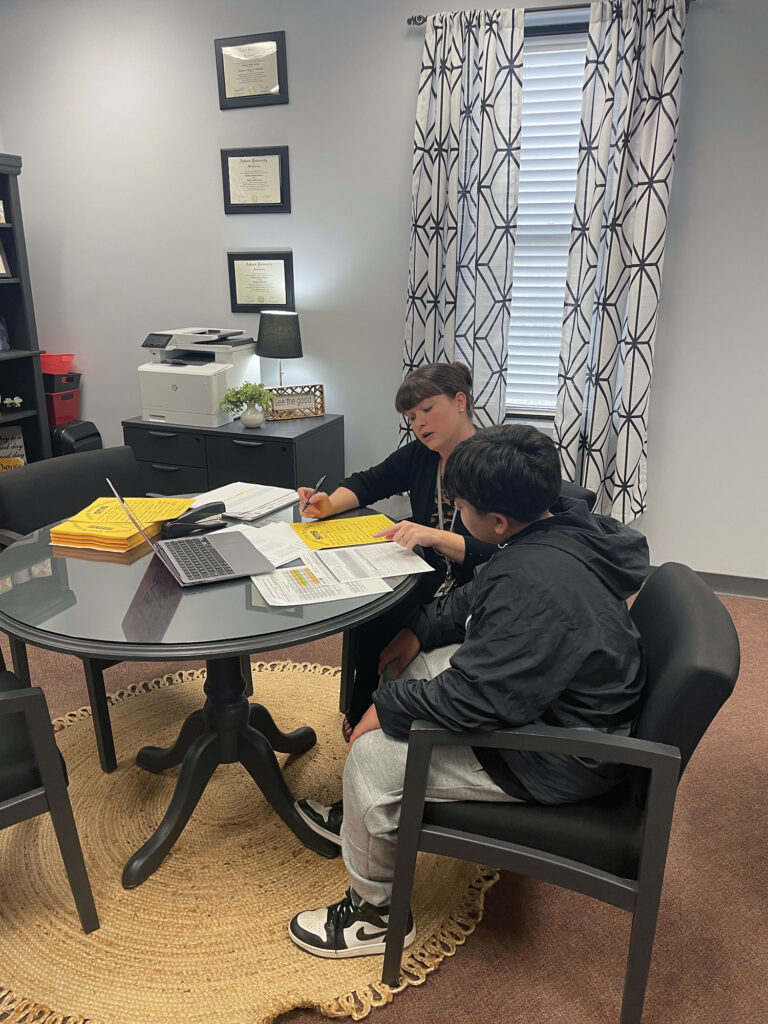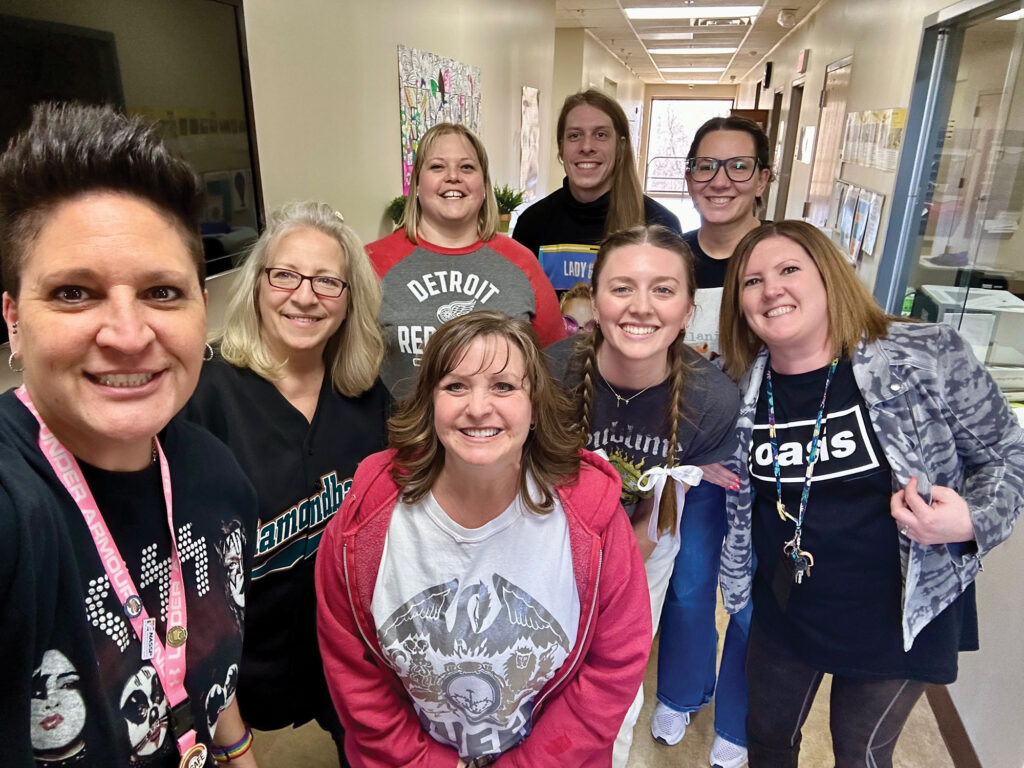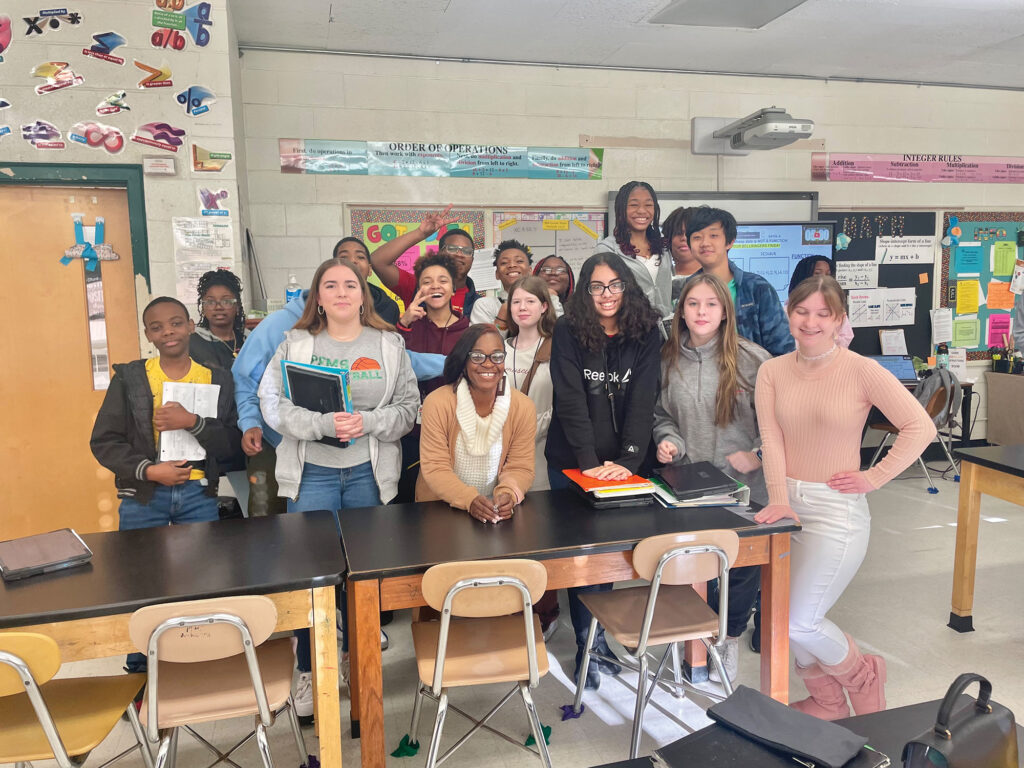The Urgent Need for Advocacy
What better time to highlight the importance of your voice than National Principals Month? On the following pages, four dedicated school leaders share how they successfully advocate for their schools and communities—and why you should advocate for yours, too.
A CAREER ADVOCATING FOR PUBLIC SCHOOLS
JERRY ANDERSON | PRINCIPAL

From the time I began as a teacher, and throughout my more than 20 years as a principal, I’ve always believed in the importance of advocating for schools and public education. We are the ones with the insight and the knowledge of what’s happening in our schools.
It starts with communicating with my fellow principals and my district leaders. Then when I have the opportunity, I advocate before our board of education. Or it can mean hosting a state representative in a “principal for a day” program, which gives me an opportunity to talk to them about some of the issues that are important to me as a principal. And from there, it might mean talking to other elected officials or advocating at the state legislature. It’s just very important that we keep our voices out there.
Two big issues probably top my list of priorities. First is school funding. When school funding is based primarily on the income and property taxes of the people who live in the community, you’re already saying the funding is going to be inequitable. In the state of Illinois, for example, more should be done to equalize that funding.
Second is the issue of school discipline and restorative practices, in particular. It’s important that we create a place where students can learn. I want to support them in that learning and encourage them to be a positive participant in our community. Restorative practices can get students to understand that when you do harm, you must give back and make it right. I’m definitely a proponent of keeping students in school because we know that the school-to-prison pipeline is real.
One of the reasons I became a principal was because I wanted to make a positive difference for students. It’s important to me to know what my students are experiencing firsthand—to have an open door so my staff and I can make them feel welcomed and heard. If you’re not listening to your students, you can’t fully know what’s happening. There’s a connection between listening to student voices and creating an inclusive school environment, especially when student voices are reflected in decisions made by school leaders and staff.
It’s just very important that we keep our voices out there.
NASSP’s School Leaders of Color Network has provided a safe space for our members to discuss a lot of these issues and to network, while at the same time elevating the importance of diversity in education and in NASSP. I like the idea that we have a space to talk about topics that are specific to leaders of color. We can share ideas and problem-solve around issues that all leaders might deal with, but they may affect us in different ways.
It’s very forward thinking of NASSP to create these networks and spaces for different groups of school leaders. It’s so important that everybody’s voice is included and that they not only feel like part of the organization but also have a say in whatever solutions are being discussed. Facilitating the network takes time, but it’s absolutely worth every minute I put into it.
Jerry Anderson, PhD, is the principal of Bloom High School in Chicago Heights, IL, and co-facilitator of NASSP’s School Leaders of Color Network.
GETTING OFF THE SIDELINES
BRITTANY SPENCER | PRINCIPAL

As I enter my sixth year as a school leader, and my second year as principal of Southside Middle School in Tallassee, AL, it has become increasingly evident the importance of having my voice heard as someone who is truly in the trenches. Legislators need leaders to speak up and be heard and be willing to share the reality in schools with them. They need to hear what’s happening in our schools so they can make the best decisions that are most relevant to students and to the educators who serve them.
I have found a couple of ways to make sure my voice is heard. One is through my involvement with Alabama’s professional organization for school leaders, the Council for Leaders of Alabama Schools (CLAS). That involvement led me to being appointed to a design team for what is known as the School Principal Leadership and Mentoring Act, which is putting into place some parameters for professional school leaders in Alabama. My role is very much about stepping out and using my voice to get school leaders the support and professional learning they need to be successful. For example, the team has developed a mentoring program for all new principals and is preparing a leadership academy for Alabama principals.
Another vehicle for making my voice—and the voices of my fellow school leaders—heard is NASSP’s Women in School Leadership Network. I’ve been involved with the network since it began, but I’ve become more active recently. The group offers a great opportunity for us to hear from guest speakers and from each other about issues and concerns we all share. It’s refreshing to hear from other school leaders going through similar trials and triumphs on a daily basis. I’m able to listen, gain insight from more experienced leaders, and provide support to others in the network.
This is a lonely position at times that most people don’t understand unless they are in that chair themselves. Developing that network of colleagues truly helped me in my first year as a principal.
We all face challenges as female leaders. One of the things we talk about is not sitting on the sidelines, but making sure we do the work to get our voices heard in a respectful way. When others see us doing that work, they’re more likely to listen when we speak.
Now that I have my first year as a principal under my belt, I’m also ready to get more involved with talking to legislators in our state and at the federal level to advocate for our schools. CLAS has regular advocacy days while our lawmakers are in session, which gives Alabama school leaders an opportunity to talk directly to our elected representatives.
I often share the importance of networking because all school leaders need someone they can call for advice. This is a lonely position at times that most people don’t understand unless they are in that chair themselves. Developing that network of colleagues truly helped me in my first year as a principal. That’s why speaking out to new leaders about the importance of networking is so significant to me.
Another area I’m passionate about is making the best professional learning available to school leaders. I truly believe that if you’re not learning, you’re not leading. I often share that phrase with my fellow leaders because continuous learning is one of my core values. Making my voice heard is about the importance of creating the time for school leaders to get the high-quality professional learning they need and to have the opportunity to network with other school leaders.
Brittany Spencer is the principal of Southside Middle School in Tallassee, AL, and a member of NASSP’s Women in School Leadership Network.
ENSURING EVERYONE FEELS WELCOME AT SCHOOL EVERY DAY
ANGIE CHARBONEAU-FOLCH | PRINCIPAL

Advocacy is an important part of my job as a principal, whether it’s at the local level in my district, at the state level where I serve as the state coordinator for the Minnesota Association of Secondary School Principals, or at the federal level with members of Congress. I believe you need to narrate your own school’s story because if you don’t, somebody else will. By being the storyteller of your school, you can share all the good things that are happening each day.
When I think about issues facing our schools today, there are three main components I believe we need to be advocating for. First is the teacher pipeline. I’m concerned that once the current generation of teachers retire, we’re not going to have enough people to replace them. And it’s actually more than teachers and principals. We have shortages in almost every essential position (from front office staff to paraprofessionals to bus drivers), and those shortages make it hard for our schools to function. Second is properly funding our schools. Districts are constantly looking at cost containment as we battle declining enrollments. As school leaders, we can use our position to partner with lawmakers, and advocate for the funding our students deserve. Third, I’m concerned about mental health and advocating for what students and staff alike need.
My involvement with NASSP’s LGBTQ+ School Leaders Network is another important part of how I’m working to make conditions better for other principals and assistant principals but also for all staff and students. The principal chair can be a lonely place on most days. When you’re identifying with the LGBTQIA+ community, it can be even lonelier. In some school districts, there are not always safe spaces to be out or to feel that support. The network was really the first time I could connect with other school leaders who could relate to my own journey and some of the challenges I had faced in becoming an administrator.
As school leaders, we can use our position to partner with lawmakers, and advocate for the funding our students deserve.
As we look to build LGBTQIA+ inclusive spaces, there are ways for schools to allow for students and staff to feel valued and seen. From signage and posters, to providing support groups, to enforcing identity harm protocols, we have a responsibility to our students and staff that they see representation in our schools. Young people should be able to see successful, happy, funny, positive adults who are openly queer and who have positive, healthy relationships and careers.
Our LGBTQIA+ students have a higher risk of suicidal ideation and bullying and safety concerns. The more we can be out and proud and visible, the more it makes a difference for those students to also feel safe to live their truth. However, it’s bigger than just advocating for staff and students who identify as LGBTQIA+, as important as that is. We’re here to advocate for all students, regardless, and it is my sincere hope that we have created a culture where they all feel they belong.
Angie Charboneau-Folch is the principal of Integrated Arts Academy in Chaska, MN, and co-facilitator of NASSP’s LGBTQ+ School Leaders Network.
USING SCHOOL RESOURCES TO BETTER SERVE OUR STUDENTS
SHAMEKA JOYNER | ASSISTANT PRINCIPAL

Earlier this year, I had the opportunity to travel to Washington, D.C., for NASSP’s celebration of the State Assistant Principals of the Year. I represented North Carolina as our state’s honoree for 2024. We had the chance to advocate with elected officials while we were in Washington, and it was exciting to be part of that work.
One issue in education that I would like to see more focus on is teacher pay. It seems like the more years you serve, the less you are valued as an educator. That can put a lot of extra stress on teachers to the point where they are burned out and many end up leaving the profession.
One of the issues we talk about at our meetings of NASSP’s Urban School Leaders Network is how our schools and districts can use resources in the best ways to serve our students—especially in under-resourced areas—to increase academic achievement. In my district, Cumberland County Schools, like in many other districts, a lot of that comes down to Title I funds.
I’m always looking for more creative ways that we can use Title I to get the biggest bank for our buck as far as how we support students and how we train teachers to help students achieve.
I’m always looking for more creative ways that we can use Title I to get the biggest bang for our buck as far as how we support students and how we train teachers to help students achieve. In various school districts I have served in, a lot of times, outside experts or new software programs are brought in for teacher professional development. While this does often reap great benefits, at times the better alternative might be to use the strong educators who we already have in our buildings to work with their colleagues. It can promote the self-efficacy of educators and diminish the feeling among teachers that they are undervalued and underappreciated.
Another issue we’ve been discussing in our network meetings is the need to value student voice in our schools. At my school, we’ve started to create more student leadership roles where student representatives can have greater input, both at their grade level and schoolwide, about the decisions that we as leaders make in schools. A lot of times, our students feel like they are just being told what to do without having any say. They want to be heard. By taking their voices into account, it can help set the positive tone and culture we want in our schools.
More of our students and teachers, as well as parents, must all work together to make their classrooms stronger, whether those efforts are focused on school funding, behavior and discipline, classroom environments, and academic expectations. A lot of our parents in my district serve in the military. We have great parental involvement, and their support is an important part of our school community.
Shameka Joyner, EdD, is the assistant principal of Pine Forest Middle School in Fayetteville, NC, the 2024 North Carolina Assistant Principal of the Year, and co-facilitator of NASSP’s Urban School Leaders Network.
